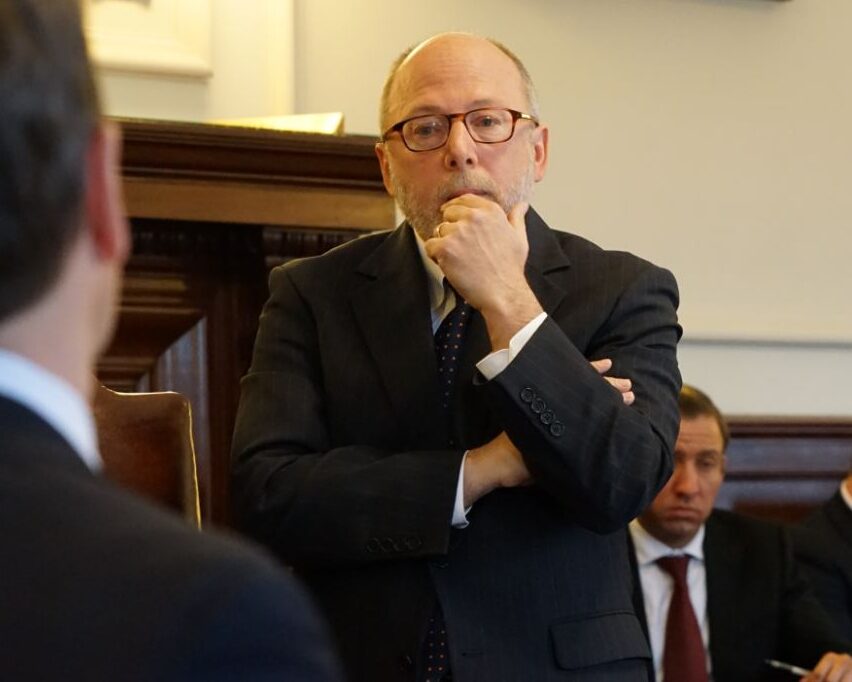A few sentences into his recent piece in InDepthNH (and other places), Andru Volinsky demonstrates that he has no idea how the statewide education tax actually works, let alone how it should work.
First, no one gets excused from paying anything. Every district collects the full SWEPT tax, spends it on adequacy, and applies any overage toward other district expenses which reduces the non-SWEPT school tax rate. If there is a shortage instead of an overage, that is made up from the state’s Education Trust Fund.
Second, what should matter is the amount that someone gets taxed, not the percentage of his house value that the amount represents — unless the idea is that someone’s house can be treated as a sort of ATM, from which school taxes can be withdrawn. (Of course, every homeowner knows that this isn’t the case, but if it were the case, then it would make sense to tax the owner’s equity in his house, rather than the value of the house. Otherwise, you’re taxing him on money he’s borrowed.)
It’s worth noting that the idea that if two people are paying for the same thing, the one who happens to have more should pay more, is the essence of Marxism. It’s hard to think of an idea that more directly conflicts with the ideals upon which America was founded, and upon which our constitutions are based.
If you doubt this, imagine that two people go to the grocery store, and check out with exactly the same items. The first person is told he has to pay $50, while the second is told he has to pay $100 because his house is worth twice as much as the first person’s. I’ve yet to meet anyone who thinks this would make sense, but it’s exactly how school taxes work. Also vehicle taxes, and income taxes, and any taxes that involve calculating a percentage.
This is all explained in a series of articles starting with this one.
Just a few sentences later, Volinsky again demonstrates his ignorance — or perhaps his willingness to deceive — by completely mischaracterizing what happened in Croydon. There was no ‘stealth’ and nothing was ‘stripped’. The people of the district were persuaded, by open discussion during the course of a completely typical annual meeting, to replace the usual ransom (i.e., the amount demanded by the school board) with a budget (i.e., an amount offered by the voters). This had nothing to do with the Free State Project. In fact, if the three Free Staters at the meeting had left the room before the vote, the amended warrant would still have passed.
If you would like to know what actually happened in Croydon, you should read The Croydon Budget Battle.
In claiming that Free Staters ‘hide their intentions and allegiances’ by running as Republicans, Volinsky doesn’t seem to realize that if you go back and look at the Republican Party platforms since the creation of the party in the 1850s, it becomes clear that the beliefs of Free Staters (and libertarians in general) are much closer to the stated goals of the party — preserving the ideals of the Declaration of Independence and the Bill of Rights — than the beliefs of those who usually run as Republicans. As libertarians, Free Staters are the Indigenous Republicans. If a Free Stater is not a Republican, then neither were Eisenhower or Reagan.
As a character in a story by J.D. Salinger once said of his mother, after a certain point, it’s impolite to go on listening to what he has to say. But it’s deliciously ironic that he chooses to quote Santayana, that those who cannot remember the past are condemned to repeat it.
Let’s look at the recent past. Since the Claremont decisions — in which Volinsky played a major part — school districts in New Hampshire are spending, on average, $15,000 more per student than they were before those decisions. That’s adjusted for inflation. For more than 150,000 students, that comes to more than $2 billion in extra spending every year.
In fact, every district in the state is spending more — again, adjusted for inflation — than any district (except Waterville Valley) was before Claremont. In terms of spending, every district is acting like a rich district, and has been for some time now.
And what do we have to show for it? Over that same period, there has been no measurable increase in student achievement.
So we’re spending an extra two billion dollars each year for nothing. That’s what we got for listening to Volinsky the last time around. (To learn a little more about how that played out, see The School Funding Shell Game).
Let’s take his advice, and not repeat that mistake.
